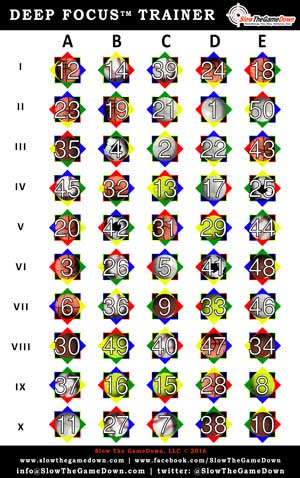Slow The Game Down Dr Bill Harrison
Posted : adminOn 4/19/2018

TORONTO — reached into the back of his locker to find the glasses. Protected in a carrying case with a hard shell and foam inside, he handled them delicately. The Nike Strobe glasses go for around $500 per pair, so is sure to be gentle with them.
Bill Harrison enjoys a well-known international reputation as a vision and sports pioneer in worldwide sporting circles. Through the years he has worked with athletes, coaches and teams in most every sport, at the professional, collegiate and amateur. Advanced Visual Strategies. With SlowTheGameDown Visual Performance Training Clinics, you will learn the most effective techniques, have a lot of fun, and be well prepared to have your best season yet! You will develop skills and skill-sets that are foundational to your game time performance.
But the value of the glasses, which strobe a black screen in front of his eyes on various speeds (faster is easier, slower more difficult) while he takes indoor batting practice, go far beyond the price for the Washington Nationals’ utilityman. With each use, each time the black screen flashes in front of his eyes with a ball barreling out of a machine toward him, it sharpens his focus and, believes, strengthens his vision.
He’s not alone. “I loved them,” said outfielder, who wore them throughout the offseason when his dad, Ron, would throw batting practice to him.
“They absolutely do work, for sure.” The Nationals, organizationally, are big proponents of vision training. And are among several players who partake in various exercises geared toward strengthening the eye to focus faster, longer and with more clarity. “The eye is a muscle,” said Nationals general manager Mike Rizzo, who encourages the team to work with Dr. Keith Smithson, a sports vision specialist in Northern Virginia and one of the team-employed doctors. “All you can do is strengthen that muscle by working it out.”. Jahshaka Portable Download more.
Said he worked with Smithson two or three times a week in the offseason, often going from his workouts at Nationals Park to Smithson’s office to do various vision exercises., too, visited with Smithson in 2011 when the optometrist fitted him for contact lenses and also introduced him to the Strobe glasses. Triple-A outfielder Corey Brown began using the glasses this year, too, and shortstop Ian Desmond has used them in indoor batting practice a few times.
But there are other ways for players to do similar strengthening work. Danny Espinosa carries with him cards from Slow The Game Down, a visual performance training center in California under the direction of Dr. Bill Harrison.
Sitting at his locker in the Rogers Centre, Espinosa looks at a card with two photographs on it and a small baseball icon on each picture. The idea, he explains, is to focus your eyes so the two icons become one and a third picture appears, clearer than the first two. Espinosa had misplaced his cards at the start of the season, he said, but has been doing the work each day for the previous four and noticed an immediate difference. In the past four games, Espinosa is hitting.364 with four doubles and two walks. Rick Ankiel, who often will focus on the letters in either shortstop Ian Desmond’s or Espinosa’s jerseys from center field and then zone back in on the opposing batter, said he prefers Espinosa’s cards over something like the Strobe glasses. Ankiel also has found other ways to work his eyes out on the field. Former Cardinals slugger Mark McGwire used to tell players in the on-deck circle to stare at the bill of the pitcher’s cap, and then at an object in the outfield to see how fast you could get your eyes to focus back.
By warming up your eyes before you stepped in the box, he felt, you were already more prepared to see the ball coming out of the pitcher’s hand when you stepped in. “The way I see it,” Ankiel said, “If you believe it helps, it helps.” “I think anything nowadays is helpful,” added manager Davey Johnson, recalling an exercise from at least 20 years ago when players would wear special glasses during batting practice and they’d be asked to call the pitch. “They wanted to know how far out of the pitcher’s hand you knew if it was going to be a breaking ball or a fastball. See how quick your eyes translated to your brain.” A few players shrugged off the suggestion, pointing out that if there was significant proof of the importance of vision training it’d likely be as mandatory as cardio or weight lifting is for the players. But they acknowledged there was probably no downside to the activities, especially the concentration it forces. Effective Ball Handling Program 2.0. “When you have the glasses on, you’ve really got to do everything perfect,” said.
“You’ve got to focus. But once you take them off, you’re still focused and [the ball] looks bigger.” NOTES: An MRI on Roger Bernadina’s strained right hamstring came back clean, and the outfielder is expected to miss no more than two or three games, Johnson said. • Mark DeRosa will be away from the team until at least Friday following the death of his father, Jack.